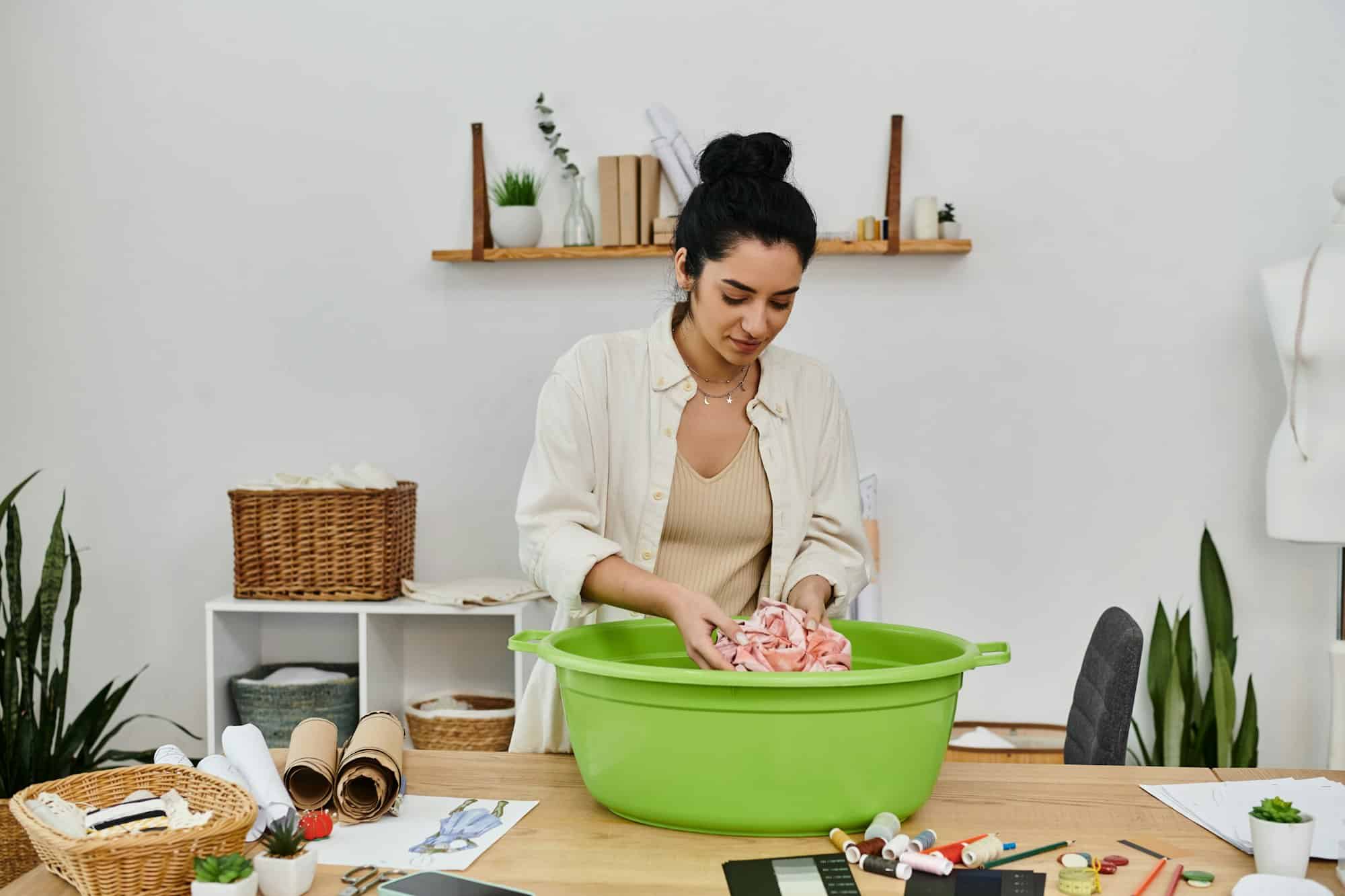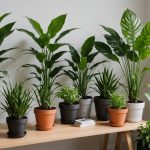Are you looking to revitalize your garden while being eco-conscious? Upcycled materials offer a creative and sustainable approach to garden design. From transforming old furniture into charming planters to repurposing pallets for stunning vertical gardens, the possibilities are endless. Discover how you can blend functionality with artistry, all while reducing waste and saving money. Revamp your outdoor space with innovative ideas that reflect your style and contribute positively to the environment.
Understanding Upcycled Materials in Garden Design
Upcycled garden materials are an innovative way to create a more sustainable gardening environment. By repurposing items that might otherwise end up in landfills, gardeners can embrace an eco-friendly design approach. But what exactly does upcycling entail? Essentially, it's the process of transforming waste materials or unwanted products into new materials or products of higher quality or environmental value.
Also to read : Urban Oasis: The Ultimate Guide to Starting a Kitchen Garden in Your UK Apartment
Incorporating upcycled materials into garden design offers several benefits. Not only does it reduce waste, but it also conserves resources and energy that would otherwise be used in the manufacturing of new products. This practice supports a more sustainable lifestyle and helps reduce your carbon footprint.
Popular types of upcycled materials suitable for gardens include old pallets, which can be turned into planters or garden furniture, and glass bottles, which can be used as decorative edging or even as plant protectors. Metal containers, like old buckets or tubs, can serve as unique planters, adding character and charm to any garden.
Have you seen this : Discover the Best Edible Mushrooms to Grow in the Shade of Your UK Backyard!
The environmental impact of using upcycled materials is significant. By choosing to upcycle, gardeners contribute to reducing the demand for new materials, thereby decreasing pollution and resource depletion. This approach not only benefits the environment but also fosters creativity and innovation in garden design.
Creative Ideas for Upcycled Garden Decor
Exploring upcycled garden decor can transform your outdoor space into a haven of creativity and sustainability. There are countless DIY garden projects that breathe new life into old furniture and household items. Imagine turning a worn-out dresser into a charming plant stand or using an old ladder as a vertical garden. These transformations not only add character but also serve practical purposes, making your garden both functional and aesthetically pleasing.
Glass bottles and jars offer endless possibilities for creative garden design. They can be repurposed as unique planters, colourful bird feeders, or even enchanting lanterns. By filling them with fairy lights, you can create a magical atmosphere for evening gatherings. This approach not only reduces waste but also adds a personal touch to your garden.
Pallets and crates are versatile materials perfect for vertical gardens. They can be mounted on walls or fences to save space while showcasing a variety of plants. This method is ideal for small gardens or urban spaces where ground space is limited. By utilising these materials, you contribute to a more sustainable environment while enjoying the beauty and functionality of your garden.
Practical Step-by-Step Projects
Embarking on DIY garden projects can be both rewarding and environmentally friendly. These upcycling tutorials guide you through hands-on gardening projects that transform waste into garden treasures.
Building a Raised Garden Bed from Pallets
To build a raised garden bed, you'll need sturdy pallets. Begin by dismantling them, ensuring you have enough planks for your desired size. Assemble the frame using screws and a drill, ensuring stability. Line the interior with landscape fabric to prevent soil erosion. This project not only recycles materials but also provides an ideal space for growing vegetables.
Creating a Vertical Garden with Old Bottles
Old bottles can be repurposed into a stunning vertical garden. Clean and cut each bottle, creating an opening for plants. Secure them on a wooden frame using wire or hooks. Fill each with soil and your choice of plants. This method maximises space and adds a unique aesthetic to your garden.
Designing a Garden Pathway with Reclaimed Bricks
Reclaimed bricks offer a rustic charm for garden pathways. Begin by planning your path's layout. Dig a shallow trench and lay the bricks in your chosen pattern. Fill gaps with sand for stability. This project not only uses recycled materials but also enhances your garden's design.
Sourcing Upcycled Materials in the UK
Discovering sustainable shopping options for your garden can be both rewarding and eco-friendly. In the UK, there are numerous local places to find upcycled materials, such as salvage yards and thrift stores. These locations often house a treasure trove of items perfect for creative garden projects. Salvage yards, in particular, offer unique finds like reclaimed wood and metal, ideal for constructing garden features.
Online platforms also provide excellent opportunities for sourcing second-hand gardening supplies. Websites such as Freecycle and Gumtree connect individuals looking to give away or sell items, making it easier to find materials without the need for new production. These platforms are not only convenient but also promote a circular economy by keeping items in use.
Community exchanges and upcycling events are another fantastic way to acquire materials while engaging with like-minded individuals. Events like Repair Cafés and local swap meets offer a space to exchange goods, share ideas, and learn new skills. These gatherings not only make sourcing materials more accessible but also foster a sense of community and collaboration in the pursuit of sustainable gardening practices. By exploring these resources, you can enhance your garden while supporting eco-friendly initiatives.
Enhancing Biodiversity Through Upcycling
Creating biodiverse gardens with upcycled materials offers a dual benefit: promoting wildlife-friendly gardening and supporting sustainable habitats. By repurposing items, gardeners can construct unique features that attract and support various species.
Using upcycled materials like old logs, bricks, or stones can provide shelter for insects and small animals. These materials can be arranged to create hiding spots and nesting areas, enhancing the garden's appeal to wildlife. Additionally, upcycled ponds or water features can be created from old bathtubs or barrels, offering essential water sources for birds and amphibians.
To encourage pollinators, consider using upcycled containers filled with nectar-rich plants. These can be positioned strategically around the garden to attract bees, butterflies, and other beneficial insects. Upcycled bird feeders and insect hotels can also be crafted from materials such as wood pallets and glass bottles, providing food and shelter.
The benefits of biodiversity in upcycled garden designs are significant. A diverse ecosystem supports natural pest control, improves soil health, and enhances plant pollination. By integrating upcycled elements, gardeners not only contribute to environmental sustainability but also create thriving, vibrant habitats for wildlife.
Case Studies: Successful Upcycled Gardens in the UK
Exploring upcycled garden examples in the UK provides insight into innovative and sustainable garden designs. These UK garden case studies highlight how creativity and environmental consciousness can transform outdoor spaces.
One remarkable project is the community garden in Bristol, where local residents utilised discarded tyres and pallets to create vibrant planters and seating areas. This initiative not only beautified the neighbourhood but also fostered community spirit.
In Manchester, a private garden showcases the potential of upcycling with old windows transformed into a greenhouse. This creative approach maximises light exposure for plants while reducing waste. The gardener shared that sourcing materials from salvage yards was both cost-effective and environmentally friendly.
Interviews with gardeners who have embraced upcycling reveal valuable lessons learned. Many noted the importance of flexibility and creativity when working with diverse materials. They also emphasised the benefits of collaborating with local communities to source unique items.
These successful projects demonstrate the potential of upcycled gardens to enhance biodiversity, reduce waste, and create aesthetically pleasing environments. By learning from these case studies, gardeners can embark on their own sustainable journeys, contributing to a greener future.
Upcycling and UK Gardening Regulations
Navigating UK gardening laws is essential for those incorporating upcycled materials into their garden design. Understanding these regulations ensures your projects are both creative and compliant.
Gardening regulations may vary by location, affecting aspects such as waste disposal, building structures, and water usage. For instance, planning permission might be required for certain constructions, like large sheds or greenhouses. It's crucial to check with your local council to understand specific requirements.
Sustainable practices align well with many regulations, as they often focus on reducing waste and promoting environmental health. When engaging in upcycled projects, consider factors like material safety and environmental impact. Using non-toxic materials and ensuring proper drainage can help maintain compliance with health and safety standards.
To ensure your upcycled garden projects meet UK gardening laws, consult resources such as the Royal Horticultural Society, which provides guidance on sustainable gardening. Local councils often offer information on specific regulations and can be a valuable resource for understanding legal requirements. By staying informed and adhering to best practices, you can create a beautiful, eco-friendly garden that respects both nature and the law.
Visual Inspiration: Upcycled Gardens
Exploring garden design inspiration can spark creativity and innovation, especially when it comes to upcycled gardens. A gallery of stunning transformations showcases how discarded items can be repurposed into beautiful, functional garden features. For instance, old windows transformed into greenhouses or vintage ladders used as plant stands demonstrate the endless possibilities of upcycled garden design.
Upcycled garden images serve as powerful visual gardening ideas, offering a glimpse into the aesthetic potential of sustainable practices. These images not only highlight the beauty of repurposed materials but also illustrate the harmony between functionality and design. By incorporating upcycled elements, gardens can become vibrant, eco-friendly spaces that reflect personal style and environmental consciousness.
The importance of aesthetic appeal in sustainable gardening cannot be overstated. A visually pleasing garden attracts attention and encourages others to embrace upcycling. Videos showcasing DIY upcycling projects provide step-by-step guidance, making it easier for gardeners to replicate these inspiring designs. By focusing on both functionality and beauty, upcycled gardens contribute to a more sustainable and visually appealing environment.
Community Engagement and Upcycling Initiatives
Engaging with gardening communities through upcycling initiatives fosters collaboration and sustainability. These communities often host upcycling workshops, where members can learn and share skills in transforming waste into valuable garden assets. Participation in such events not only enhances individual creativity but also strengthens community bonds.
Local gardening events provide a platform for enthusiasts to exchange ideas and resources. By joining gardening clubs focused on sustainability, individuals gain access to a network of like-minded people dedicated to eco-friendly practices. These clubs often organise events that promote the use of upcycled materials, offering members the chance to contribute to collective projects.
Successful community-led upcycling initiatives demonstrate the power of collective effort. For instance, neighbourhoods have come together to repurpose discarded materials into shared garden spaces, creating vibrant community gardens. Such projects highlight the potential of upcycling to transform not only gardens but also community dynamics.
Involvement in these initiatives offers numerous benefits, including skill development, resource sharing, and environmental impact reduction. By participating in local gardening events and workshops, individuals contribute to a culture of sustainability, fostering a greener future for their communities.











